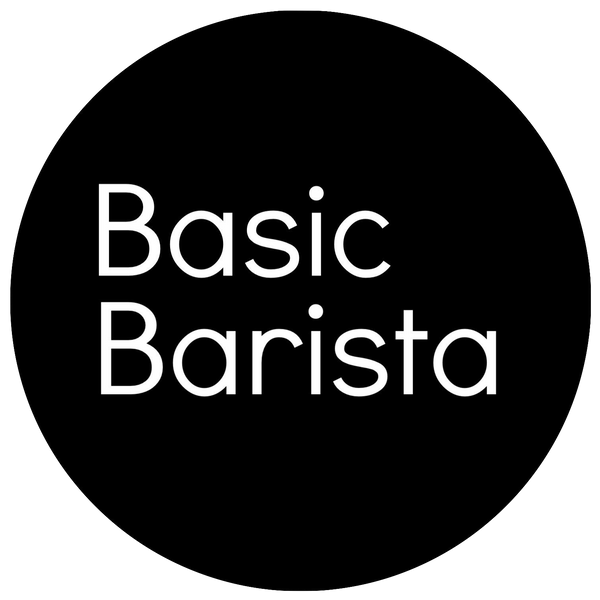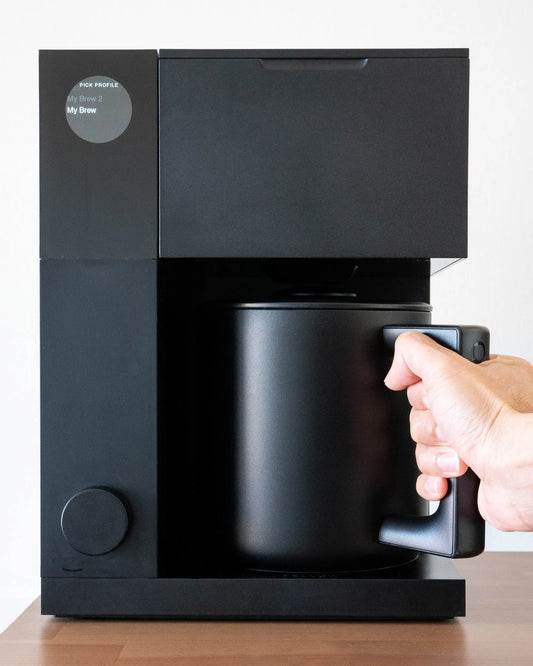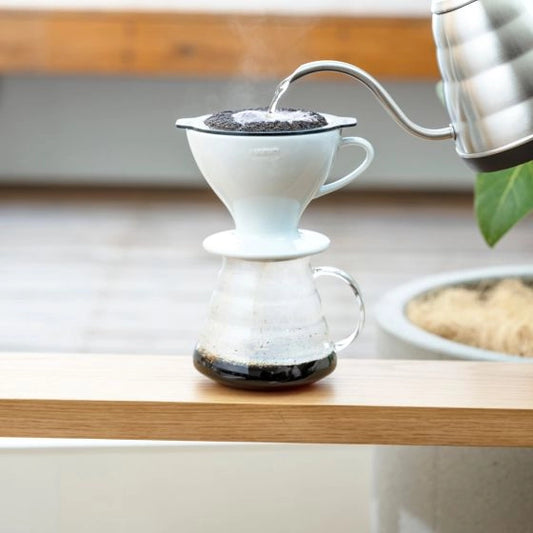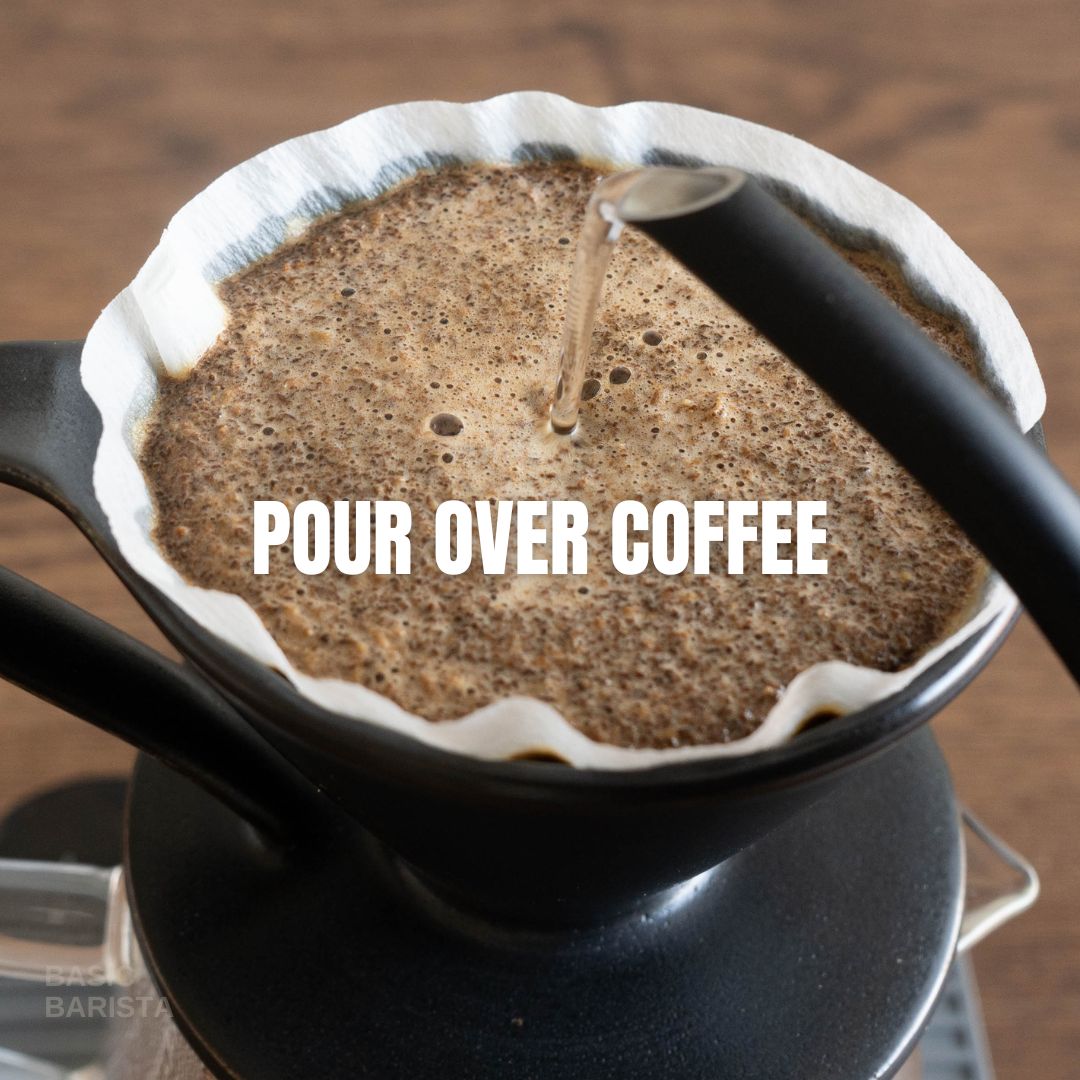
How To Brew Pour Over Coffee
Share
Brew Method:
- Start by folding your paper filter and placing it inside your coffee dripper of choice, do this by folding against the seam and then adding some water to hold the filter in place and remove that papery taste.
- Next grind 20 grams of coffee to a medium grind size, somewhere close to a grainy sand size.
- Place your coffee grounds in your coffee dripper and start pouring your water, use 300g of coffee broken down into 3 seperate pours of 100g.
Make sure your coffee draws down completely before starting your next pour

Coffee Grind Size:
When it comes to grinding coffee for pour over there is a couple of things you should know, the first is that there is no 'pour over grind size' or 'espresso grind size' there is instead, a range of grind sizes that will allow you to make a certain brew method.
Unfortunately if you find a grind size that works perfectly for one type of coffee it may not be as tasty for a different bean, as frustrating as this is, making pour over coffee will require you to constantly play and adjust your variables to make your coffee taste better.
If you have a Comandante grinder, check out our Comandante Grind Size Conversion Chart to see our recommendations for different brew methods.
Pour Over Coffee Ratio:
'Ratio' in coffee refers to the relationship between the weight of coffee and water used to brew with, this is shown as 2 numbers (e.g 1:15) and helps us to craft and understand brew recipes.
For your reference I have included a couple different ratios for popular drinks:
- 1:1 = Ristretto
- 1:2 = Espresso
- 1:3 = Lungo
- 1:5 = Cold Brew Concentrate
- 1:15 = Filter coffee
To use coffee ratios simply decide on how much coffee you want to make, for example if you wanted to make a pour over (1:15) and you wanted around 450ml simply divide 450/15 = 30. This equation has worked out that you will need to use a 30g dose of coffee beans.
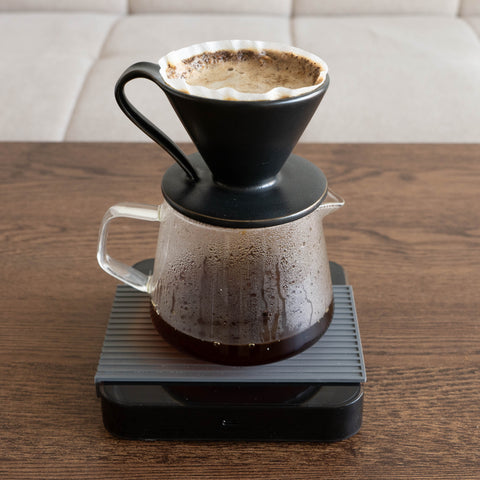
How to Dial in your pour over coffee:
To dial-in pour over coffee you need to understand all of the variables at play... well the main brewing variables that you have control over at least.
The first thing you have to do to dial in coffee is to brew a coffee, take note of the grind size, the water temperature, the brew ratio, the yield, the draw down time and the amount of pours you made.
All of this will help you to understand what worked this time around and to change variables to improve your next brew. Only change 1 variable at a time, changing multiple variables will confuse you and create uncertainty around what exactly caused the change.
What variables should I change first to dial in pour over
- Grind Size - Change your grind size first, this has the biggest influence on your coffee and will usually be the only change that needs to be made.
- Ratio - Your coffee to water ratio will have the second biggest impact on your pour over coffee, adjust this after you have adjusted your grind size.
- Water temperature - Next is water temperature, by changing your water temperature you can fine tune your coffees extraction.
- Brew Method - This includes changing things like the ammount of pours used, the amount of agitation when pouring and the time in between pours.
- Dripper & Filter - As a last resort you may want to consider changing your coffee dripper and your coffee filter. Who knows, maybe you're just using a coffee filter that doesn't work well with your coffee dripper.
Water Temperature:
You may be asking yourself what water temperature should you use to make pour over coffee? While water temperature is similar to grind size in the sense that you can use a range of temperatures to make the coffee it really is up to your preferences when it comes to how hot you brew with.
There are many schools of thought when it comes to water temperature, but here is the science that we can all agree on. Water is extracting coffee, the hotter your water is the higher amount of extraction will occur. Put simply, this is all you need to know but when it comes down to dialling-in your coffee you can change your water temperature to change the flavour of your coffee.
If your coffee tastes too Bitter: your water may be too hot, try dropping your water temperature to lower the extraction and reduce the bitterness.
If your coffee is tasting weak and watery: try increasing your water temperature to increase the extraction and taste stronger.
Water temperature in coffee is an often difficult to understand variable, I believe this is mainly because it is difficult for people to brew 2 coffees side-by-side using different water temperature just to taste the relationship of water temperature.
